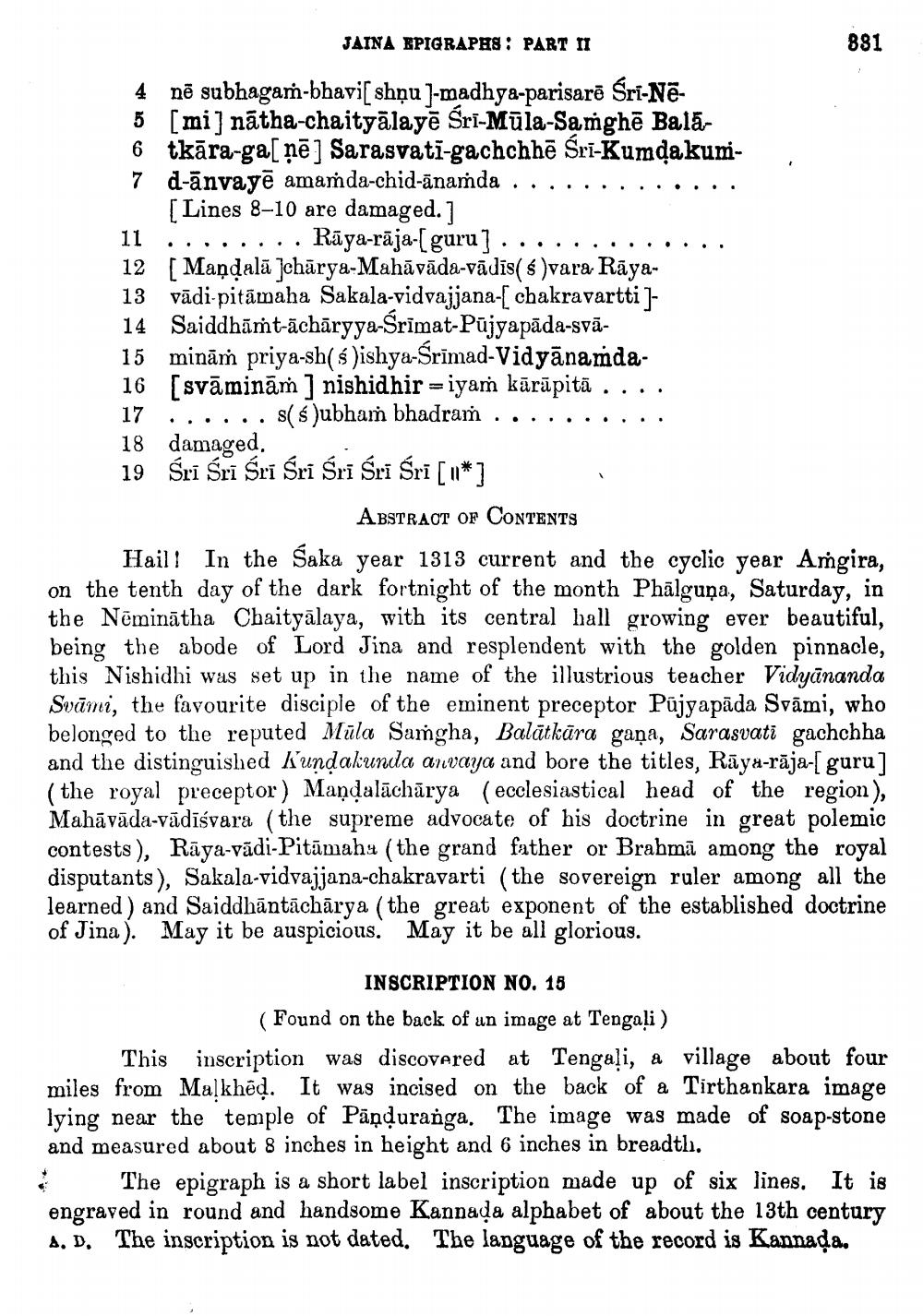________________
JAINA EPIGRAPHS : PART II
881
4 nē subhagam-bhavi[ shņu l-madhya-parisarā Sri-Ne5 [mi] nātha-chaityālayē Śri-Mūla-Samghē Bala6 tkāra-ga[ņē ] Sarasvati-gachchhē Śri-Kumdakum7 d-ānvayē amamda-chid-ānaṁda .............
[Lines 8-10 are damaged. ] 11 ........ Rāya-rāja-[guru] ......... 12 [Maņdalā ]chārya-Mahāvāda-vādīs( 6 )vara Rāya13 vādi-pitāmaha Sakala-vidvajjana-[ chakravartti]14 Saiddhāṁt-āchāryya-Srimat-Pūjyapāda-svā15 mināṁ priya-sh( s )ishya-Srimad-Vidyānamda16 [svāminām] nishidhir=iyam kārūpitā .... 17 ... ... s($)ubham bhadraṁ .......... 18 damaged. 19 Śrī Sri Sri Sri Śrī Śrī Śrī [1*7
ABSTRACT OF CONTENTS Haill In the saka year 1313 current and the cyclic year Añgira, on the tenth day of the dark fortnight of the month Phālguņa, Saturday, in the Nēminātha Chaityālaya, with its central hall growing ever beautiful, being the abode of Lord Jina and resplendent with the golden pinnacle, this Nishidhi was set up in the name of the illustrious teacher Vidyānanda Svāmi, the favourite disciple of the eminent preceptor Pūjyapāda Svāmi, who belonged to the reputed Müla Samgha, Balātkāra gaña, Sarasvati gachchha and the distinguished kundakunda anvaya and bore the titles, Rāya-rāja-[ guru) (the royal preceptor) Maņdalāchārya (ecclesiastical head of the region),
vāda-vādīśvara (the supreme advocate of his doctrine in great polemic contests) Rāva-vādi-Pitāmahu (the grand father or Brahmã among the royal disputants), Sakala-vidvajjana-chakravarti (the sovereign ruler among all the learned) and Saiddhāntāchārya (the great exponent of the established doctrine of Jina). May it be auspicious. May it be all glorious.
INSCRIPTION NO. 15
(Found on the back of an image at Tengali) This inscription was discovered at Tengali, a village about four miles from Maļkhôd. It was incised on the back of a Tirthankara image lying near the temple of Pāņduranga. The image was made of soap-stone and measured about 8 inches in height and 6 inches in breadth.
The epigraph is a short label inscription made up of six lines. It is engraved in round and handsome Kannada alphabet of about the 13th century A. D. The inscription is not dated. The language of the record is Kannada




